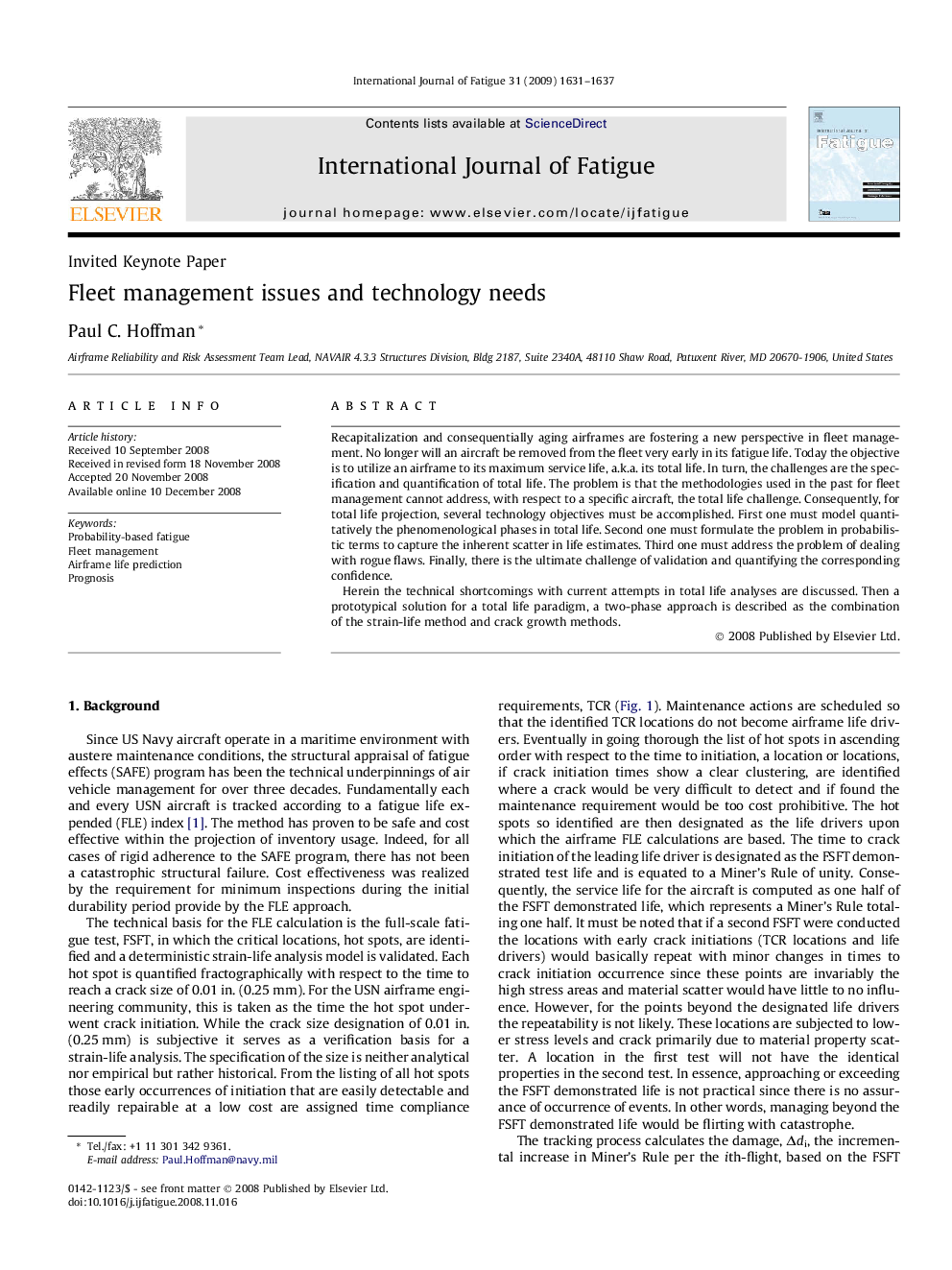| Article ID | Journal | Published Year | Pages | File Type |
|---|---|---|---|---|
| 775635 | International Journal of Fatigue | 2009 | 7 Pages |
Recapitalization and consequentially aging airframes are fostering a new perspective in fleet management. No longer will an aircraft be removed from the fleet very early in its fatigue life. Today the objective is to utilize an airframe to its maximum service life, a.k.a. its total life. In turn, the challenges are the specification and quantification of total life. The problem is that the methodologies used in the past for fleet management cannot address, with respect to a specific aircraft, the total life challenge. Consequently, for total life projection, several technology objectives must be accomplished. First one must model quantitatively the phenomenological phases in total life. Second one must formulate the problem in probabilistic terms to capture the inherent scatter in life estimates. Third one must address the problem of dealing with rogue flaws. Finally, there is the ultimate challenge of validation and quantifying the corresponding confidence.Herein the technical shortcomings with current attempts in total life analyses are discussed. Then a prototypical solution for a total life paradigm, a two-phase approach is described as the combination of the strain-life method and crack growth methods.
